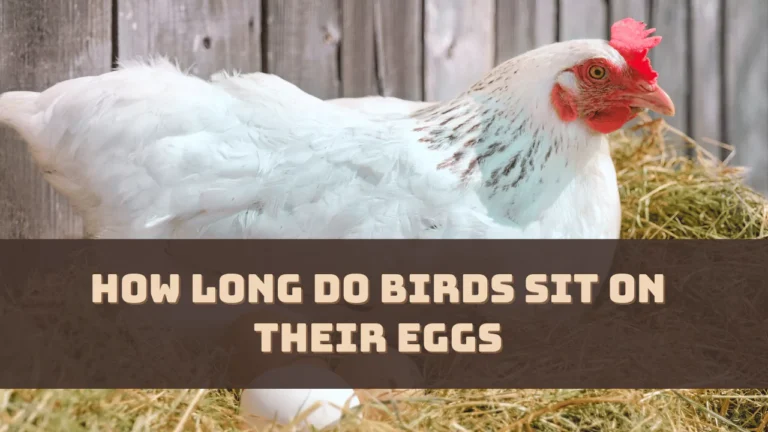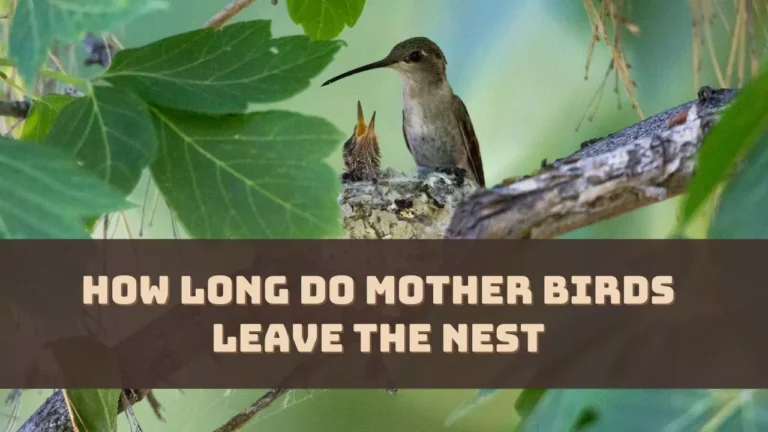Birds are known for their predicting senses and they react strongly to weather disturbances. If carefully noticed, avians send each other signs or behave strangely before the approach of a storm. These patterns can provide valuable insight into the changing weather and provide the chance to stay prepared.
So, explore the signs a bird exhibits during an approaching storm and how they detect it.
What are the Common Behavioral Changes in Birds Before a Storm?
Here are the common signs that are seen among birds during an approaching storm:
Restlessness and Agitation
Birds become restless as soon as they can sense that the weather is changing. They become more agitated and vocal and are seen communicating with other birds. You get to hear a lot of chirping and chattering along with repetitive calls. Some birds make high-pitched alarm calls, such as Blue Jays, and some make “tic tic tic” alarm notes, such as the European robins. It can be concluded that the birds are making noise just to warn everyone about the approaching danger.
Fluffing their Feathers
If observed closely birds are seen preening their feathers more often and fluffling them before a storm. They are seen to distribute the oil evenly on their feathers which would help them to repel the water if they get exposed to rain. Preening would also help them maintain body heat if they get wet. During windy conditions, the oil on their feathers would help to realign the barbs on individual feathers and reinforce the feather’s interlocking structure.
Spike in Feeding Activity
Birds are also seen to collect and store food items, right before the storm. Their foraging behavior increases and they start to eat more, which would help to build energy reserves as most of the storms lead to potential scarcity of food.
Circling the Sky
Some species of birds are seen circling the sky and gaining altitude right before the storm, and these birds are also known as soaring species, such as eagles, and hawks. As the air starts to rise during the storm, these birds soar high to stay safe and avoid the turbulence caused by the wind during the storm. Some are also seen to patrol the territory, such as American Robins.
Flocking and Congregating
Birds are seen to exhibit communal roosting, which includes flocking, as the storm approaches. Multiple species are also seen to form a group to enhance the protection and team up to find resources, as the weather conditions become challenging.
Waterfowl are seen to form a tight V formation, which helps them to conserve energy, and protect the vulnerable ones and they can also communicate easily about the conditions before and during the storms. Birds retain this formation while migrating, right before the storm, where the leading bird makes its way through the wind and the others ride slipstream.
Roosting Adjustments
There is also a change noticed in the roosting behavior of the birds right before a storm hits. They are seen to use extra materials to build a stronger nest, which can withstand the heavy wind and rain during the storm.
Some birds are also seen moving the nest from natural tree cavities to a much deeper tree hole. They look for services that have thick woods to protect the nest during the storm. To reduce the damage risk caused by storms, such as flooding, some birds are also seen to nest in tall sturdy trees, such as hardwoods and pine.
Ground Sheltering
To escape the turbulent winds, many birds are also seen to either fly low or descend to the ground. Birds like Swallows are seen to weave close to the ground or water surface to avoid the storm. Some also make short and low burst flights and tend to flap wings less than usual, so that they can limit their exposure.
Many birds like sparrows are also seen to cover themselves during the storm within grassy bottom lands which have thick, matted vegetation cover. When the wind rises, woodpeckers are seen to cling to large tree trunks to get sheltered from approaching storms. Some birds are even seen to dig burrows and go underground, which provides insulation, to escape the severe weather condition
How Birds Determine Approaching Storms?
Birds have well-developed sensory abilities that help them to forecast storms and they are –
Detecting Change in Barometric Pressure
If there is a shift in the air pressure or it is plummeting, then a storm must be arriving in two or three days. Birds can easily detect this change or decrease in pressure.
Change in Wind Speed and Direction
Birds can also detect the shift in wind or change in wind speed which indicates an approaching storm. Migrating birds can sense if there is a sudden headwind, and so they try to seek shelter.
Electromagnetic Field Variation
When the storm starts to brew there is a subtle change in the electromagnetic field around it, which can be easily detected by a bird, giving them a cue of the upcoming change in weather.
Visual Cues
Birds have sharp eyesight and they can also view things miles away, so it gets easier for them to detect the distant lightning flashing on the horizon, or the darkening of skies, which is an alert of building storms.
Scent Signals
Birds also have an excellent olfactory sense and when there is an approaching storm, there is an increase in the level of ozone and other scents which can be detected by the avians.
Natural Instinct
Over years of evolution, birds have developed an innate capability to detect any approaching threat, be it a storm. With learned experiences, they have developed refined knowledge and predictive skills about any change in weather conditions.
What are the Strange Behaviors Seen Among Birds Before a Storm?
When the weather is about to get extremely severe or there is a storm ahead, then 3 strangely unusual behavior is seen among birds:
- Before a massive storm, birds become extremely calm or inactive. There is usually calmness observed among a flock of birds.
- There is a reduced predatory behavior and even potential prey are observed to be flocking around their predators before a huge storm.
- Birds start seeking shelter in unfamiliar places, such as barns, outbuildings, or any human-occupant structures.
Do Birds Have Specialized Sensory Organs to Detect Storms?
Yes, birds have specialized sensory organs called baroreceptors, located in the wall of the blood vessels which run throughout the body, even the beak and legs. When the air pressure drops, the receptors easily detect this change and send signals to the brain, which results in strange behavior among the birds.
How Does The Change in Humidity Affect Birds?
When there is an increase in humidity, the birds become restless, and when there is a decrease in humidity they try to seek shelter.
Why Do Birds Exhibit this Strange Behavior Before the Storm?
When birds are unable to sense any change in weather or advance of any storm, they show strange behavior to survive the storm, warn members of the flock, reproduce successfully, and preserve the diverse bird population, to avoid predators during vulnerability.
What is Assortative Flocking?
When there is a change in weather, the birds are seen to congregate in large groups which is called flocking, which helps to create a microclimate for them, but if the bird species flock with other birds having similar traits, such as size, then it is called assortative flocking. ir serves multiple purposes, such as – providing safety, conserving body heat, increasing the chances of foraging, and also reducing competition within the flocks.




